Have you ever wished you could bake a traditional Swedish bread that's both rich in flavor and simple to make?
This easy Swedish limpa bread recipe is your ticket to a fragrant, moist loaf that's perfect for any occasion. Bursting with the warm, comforting flavors of rye, orange, and a hint of molasses, this bread will quickly become as much a favorite in your family as it is in mine.
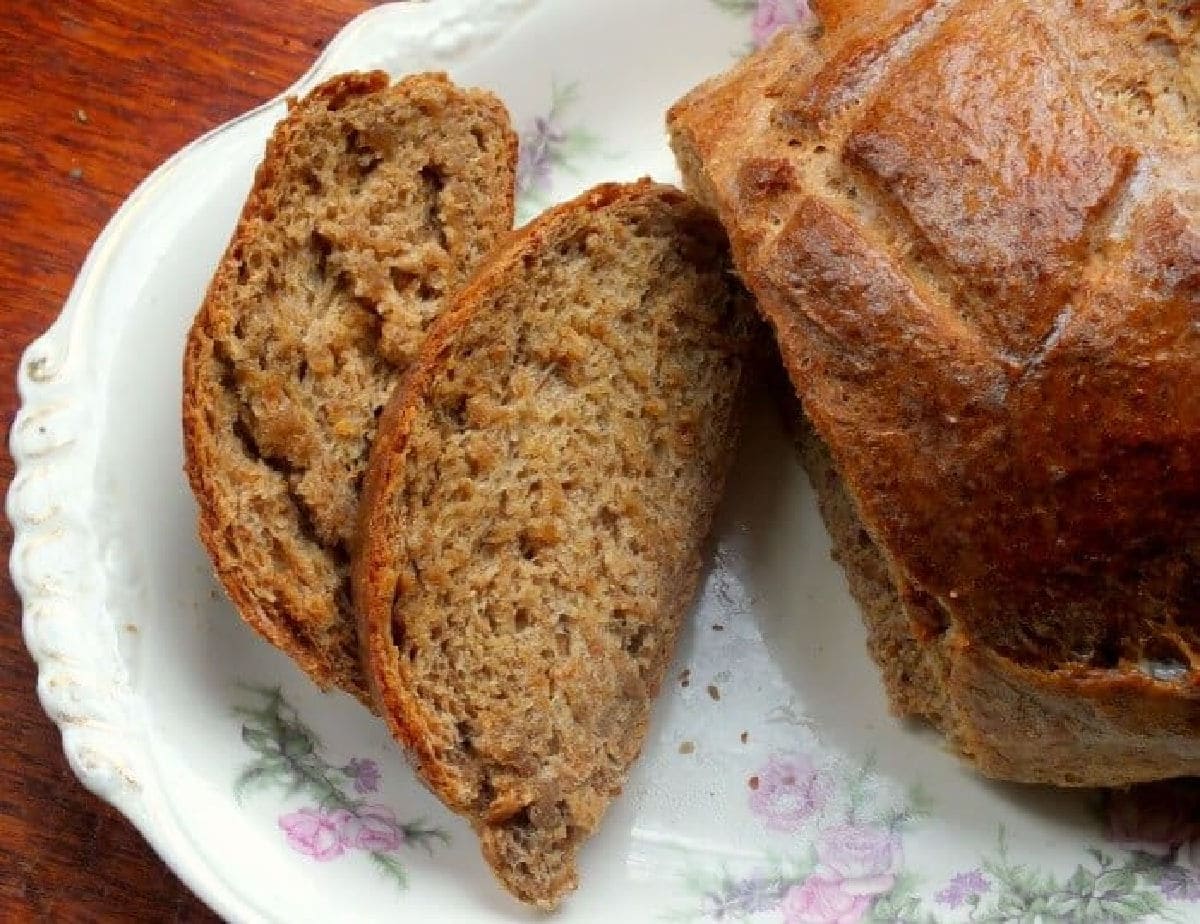
Table of Contents
Save this recipe by clicking on the ❤️ heart on the right-hand side of the screen or in the recipe card.
🗝️ Key takeaways
- Flavor: I love the flavor of this traditional Swedish bread. It's a delightful combination of rye, orange, and molasses. It’s both hearty and slightly sweet, making it perfect for sandwiches or as an addition to your main meal.
- Versatile: Makes amazing toast so it's Perfect for breakfast with a pat of butter, as a side with soups and stews, or as a sandwich bread. It’s especially delicious during the holiday season.
- Using rye flour: Learn how to work with rye flour, which can be tricky if you haven't worked with it before.
Limpa means "bread " in Swedish so the proper name for this is just "Limpa"
Swedish Limpa is a rye bread with a delicate, sweet flavor and just a hint of orange. It is similar to Hawaiian bread - not too sweet but just right.
This is time consuming to make — you'll need to set aside about five hours — but you don't have to be working on it the whole time and it freezes well.
Make a double or triple batch on a Saturday or other day off.
This gorgeous Mexican loaf has a similar flavor
🧾 Ingredients
This is an overview of the ingredients. You'll find the full measurements and instructions in the green recipe card (printable) at the bottom of the page.
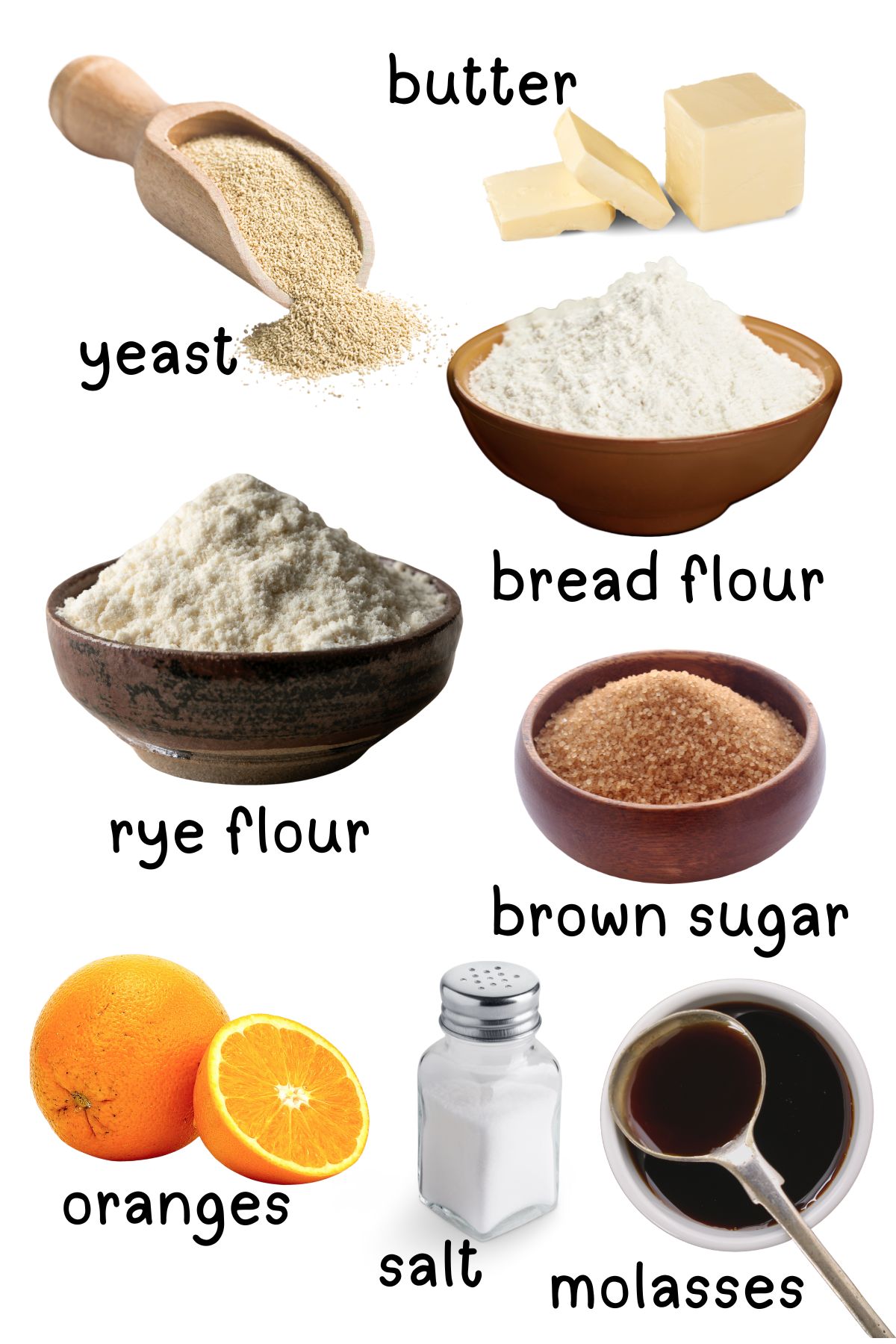
📖 Variations
- Seeded Limpa: Add caraway or fennel seeds for extra flavor and texture.
- Sweet Limpa: Increase the amount of molasses and brown sugar for a sweeter loaf.
- Herb-Infused Limpa: Mix in finely chopped herbs like dill or rosemary for a unique twist.
🤫 Cook's secrets -
For an extra crispy crust, brush the loaf with a little water before baking and place a pan of hot water in the oven.
🍴 Equipment
- large
mixing bowl - small
mixing bowl - measuring cups and spoons
- heavy baking sheet
- instant-read thermometer
- stand mixer
- wire rack for cooling
🥫 How to store leftovers
Store leftover Swedish Limpa Bread in a paper bag at room temperature for up to 3 days.
For longer storage, wrap the bread tightly in plastic wrap or aluminum foil and freeze for up to 3 months.
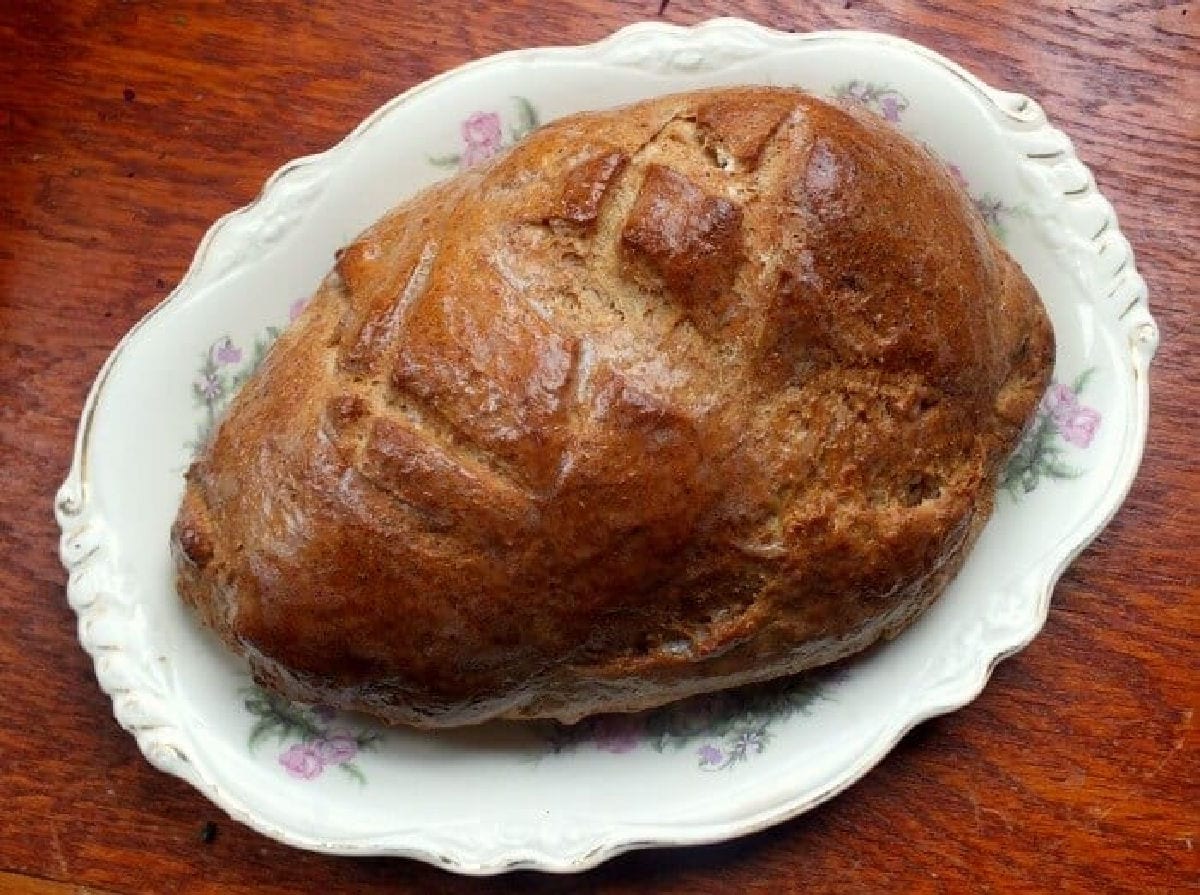
Marye's Tip
For an even richer flavor, let the dough rise slowly in the refrigerator overnight during the first rise. This slow fermentation enhances the taste and texture of the bread.
💭 Things to know
- Keep cool: Be sure that you cool the molasses mixture to 100F - 110F before adding the yeast mixture.
- Gluten development: Proper kneading helps develop gluten, which gives the bread its structure and chewy texture.
- Yeast activation: Make sure your water is warm (not hot) to activate the yeast without killing it.
- Orange zest: Freshly grated orange zest gives the bread a fragrant, citrusy aroma that's simply irresistible..
- Less gluten: Keep in mind that rye flour is hard to work with because of the lack of gluten. The bread will not be springy like white bread and if you don't knead it enough you'll be able to use it as a door stop.
- Test texture: If you pinch the dough between your thumb and forefinger properly kneaded bread will feel the same as your earlobe.
- Best rise: No place to let the dough rise? Heat your oven for 2 minutes or so then turn it off. When you put your hand in the oven it will feel like downtown Dallas in June - nice and warm! (about 100 degrees). Put the dough in the warm oven to rise.
- Cool completely: Be sure to let the loaf cool completely before slicing.
👩🍳 FAQs
Have other questions? Ask me in the comments!
Yes, you can. Simply mix the instant yeast directly with the dry ingredients and proceed with the recipe as written.
It's a slightly sweet rye bread with a hint of orange flavor.
It's a combination of rye and bread flours. The rye gives the bread flavor while the gluten in the bread flour helps it to rise.
📚 Related recipes
🍽️ Repurpose leftovers
- Bread crumbs: Toast leftover bread and place in the blender or food processor to create flavorful crumbs for casseroles, meatloaves, and other recipes.
- Croutons: Cut the bread into cubes, toss with olive oil and herbs, and bake until crispy.
- Topping: Toast pieces of rye bread and use to top scalloped tomatoes.
📞 The last word
This classic Swedish yeast bread recipe turns out a golden loaf with a crispy crust and tender crumb.
It is a little challenging but you can do it!
You won't believe how good your house smells as this is baking. And really, consider the coolness factor. It's not everyone that can tell their friends, "Oh, yeah...I made Swedish Limpa over the weekend..."
Give this Swedish Limpa recipe a try and then let me know how you did. I adapted this recipe from one of my old cookbooks, Farm Journal's Homemade Bread, 1969.
If you click on the number of servings in the recipe card you can adjust the measurements up or down for the exact number of servings you need.
If you love this recipe please comment below and give it 5 stars! ⭐️⭐️⭐️⭐️⭐️
📖 Recipe
Swedish Limpa
Print Pin Recipe Save Recipe Rate RecipeIngredients
- ¼ cup brown sugar
- ¼ cup Grandma's Molasses, make sure to get unsulfured molasses.
- 1 tablespoon salt
- 2 tablespoons buttter
- 1 ¼ cup boiling water
- ¼ cup orange juice
- 2 tablespoons orange zest
- ¼ ounce yeast, 2 ¼ teaspoons active dry yeast
- ¼ cup warm water, (110F)
- 2 ½ cups rye flour
- 3 cups bread flour, you may need more
Instructions
- Combine the brown sugar, molasses, salt, and butter in a large bowl.
- Pour the boiling water over the top an stir until the sugar is dissolved.
- Let cool o lukewarm (about 110F).
- Sprinkle yeast over the ¼ cup warm water. Stir and set aside to foam.
- Stir rye flour into the brown sugar mixture.
- Stir in yeast, orange juice, and orange zest.
- With the mixer on medium low and the dough hook mix in enough of the bread flour to form a soft dough.
- Knead for 5 to 8 minutes by machine or 10 to 15 minutes by hand. The dough will be slightly sticky and feel like smooth Play-Do. I usually stop kneading when the dough feels like your earlobe.
- Grease a large bowl.
- Put the dough in the bowl, grease the top, and cover with a clean tea towel.
- Let rise in a warm (100F) spot for 2 hours, or until doubled.
- Punch the dough down.
- Divide in half and let rest for 10 minutes.
- Shape into ovals and place on a greased baking sheet.
- Slash tops.
- Cover and let rise 1 ½ hours or until not quite doubled in size.
- Preheat the oven to 375F.
- Bake for 25 to 30 minutes, or until the bottom of the loaf sounds hollow when tapped.
- Remove from oven and let cool before slicing.
Notes
- Be sure that you cool the molasses mixture to 100F - 110F before adding the yeast mixture.
- Keep in mind that rye flour is hard to work with. The bread will not be springy like white bread and if you don't knead it enough you'll be able to use it as a door stop.
- If you pinch the dough between your thumb and forefinger properly kneaded bread will feel the same as your earlobe.
- Be sure to let the loaf cool completely before slicing.
Nutrition Facts
Nutrition information is estimated as a courtesy. If using for medical purposes, please verify information using your own nutritional calculator. Percent Daily Values are based on a 2000 calorie diet.
This recipe has been tested several times. If you choose to use other ingredients, or change the technique in some way, the results may not be the same.
First published January 21, 2014. Last updated June 10, 2024 for editorial improvements.
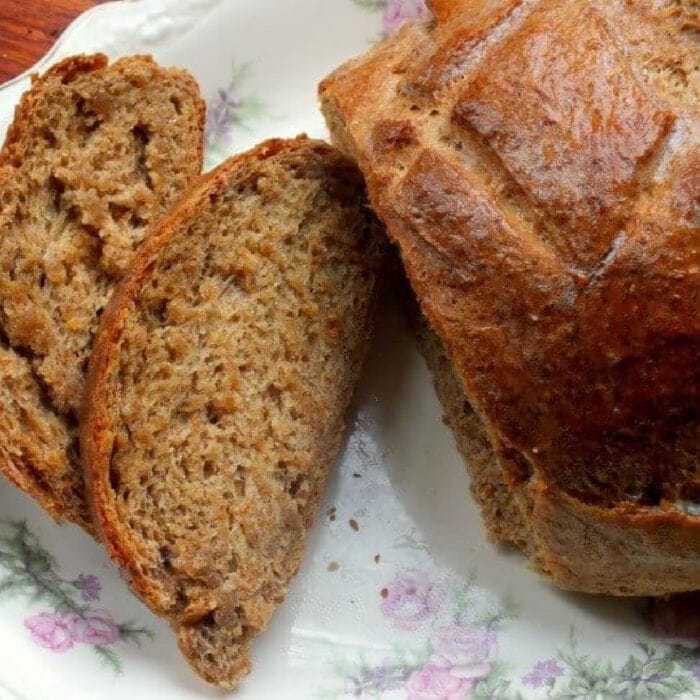
Don't lose this recipe!
Swedish Limpa
Pin this delicious rye bread recipe to your favorite Pinterest board.

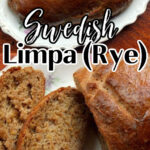
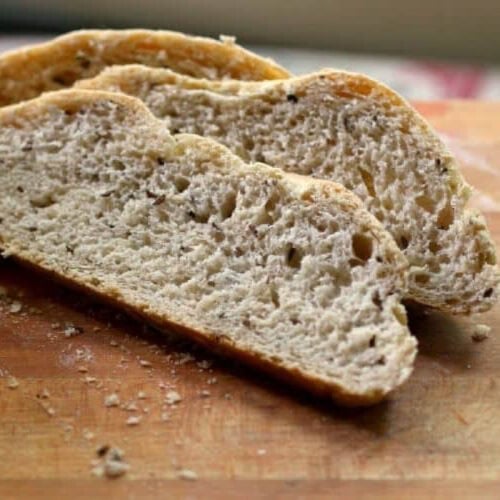
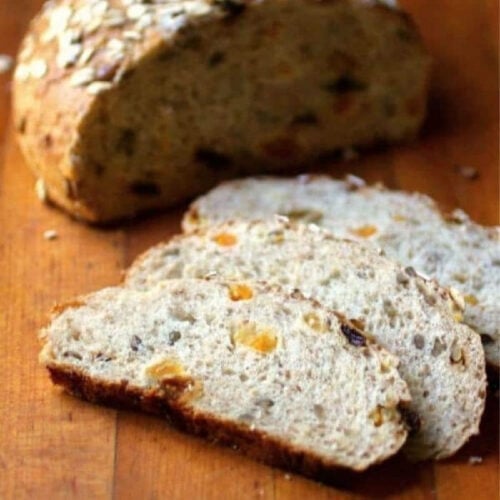
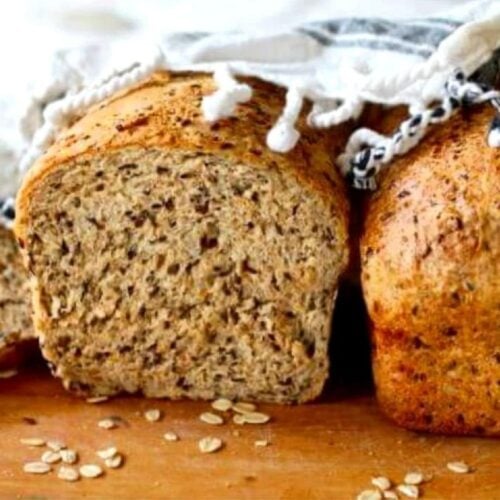
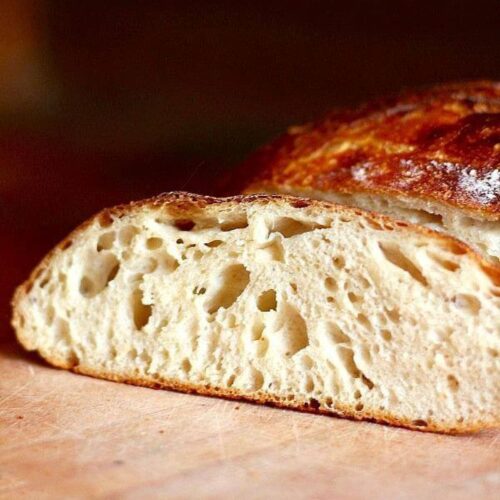
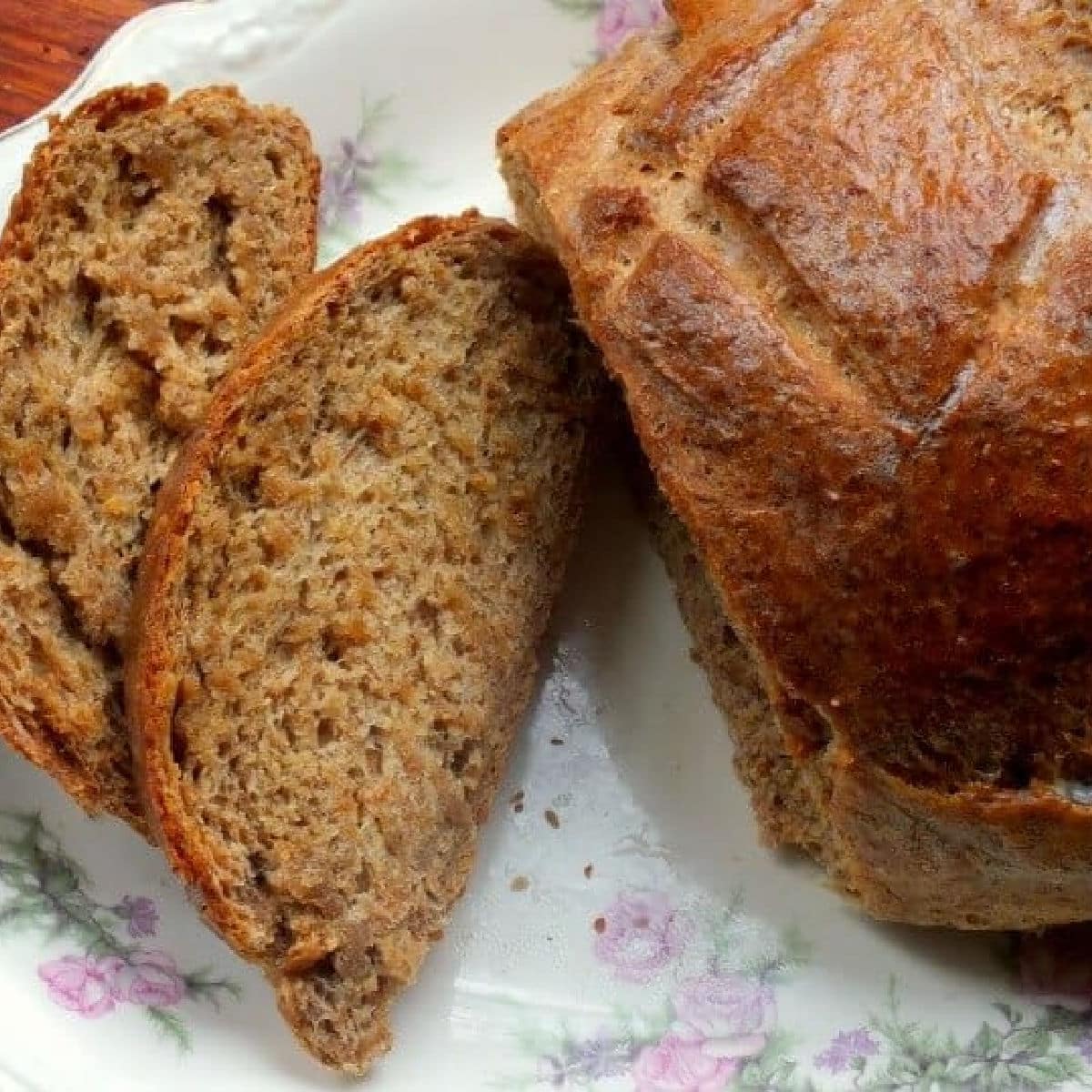
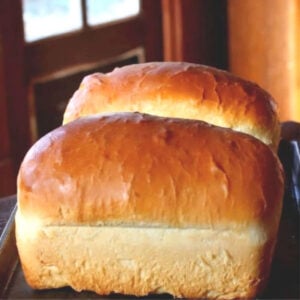
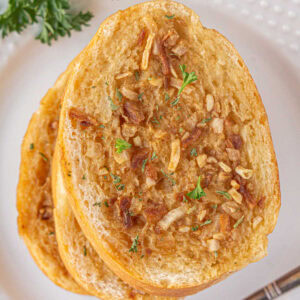
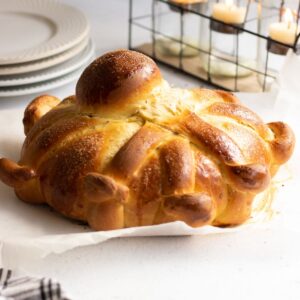
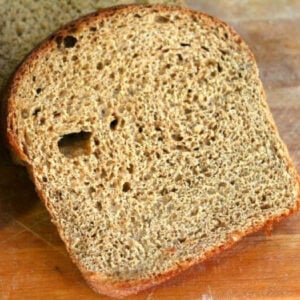
Christa Spang says
Can I make it without the orange and just have rye bread?
Marye says
yes, or try one of the other rye breads on my site.
Liz Fraser says
My first attempt at rye bread and it turned out amazing. House smelled great and is really tasty! Will make this again
Patricia Swanson says
I love rye bread-any kind. I saw your recipe and thought it looked like the Limpa rye I ate as a kid. It went together like a champ in my Kitchenaid Industrial sized mixer. It rose as per the recipe. I divided the dough as directed and placed on my USA baking pan coated with avocado oil. At the 28 minute mark, the internal temp was only 185 F. I kept it going for another five minutes. Then it was 198F, so removed it from the oven. I HAD to taste it, so after 15 minutes cooling, I snitched a little piece from an edge. Oh WOW. What a wonderful orange flavor. I love the hint that the dough is right when it feels like your ear lobe. I did that after I had thought is was right. It sure did. Thanks for this terrific recipe.
Marye says
I'm glad you liked it! It's one of my very favorites!
Gayle says
Wonderful Swedish Rye. The texture and taste are just like the bread I remember.
Julie says
Good day, please, if possible, provide the weight of the flours either in grams or ounces. Thank you in advance.
Marye says
I'm sorry, that's not how I write my recipes.
Lenore says
This is a lot like my Swedish grandmother's recipe, but she used milk instead of water, and she added crushed fennel seed for added flavor. I will make this recipe today!
Sharon says
Fantastic bread just like your other bread recipes!
Marye Audet says
Aww thanks Sharon!
Helena says
What is Swedish about this?
The name maybe but nothing else.
Just curious to know 🙂
Marye Audet says
It is a Swedish recipe so it has a Swedish name?
gralan says
I've been looking for a recipe for this bread, and even my Great Uncle Alphonse Anderson never used the term Limpa so I never knew that. From my earliest memories pickled herring, Potatos Korv, lefse, and Swedish rye bread were always on the menu at holidays.
Thank you very much.
PS. My Grandparents came over from Sweden, and my Dad spoke Swedish until age 12 when the the community switched to English worship services, no Swedish until after 10pm as the kids were having difficulty with English as their second language in school.
Marye Audet says
That's fascinating! I am so glad you like it.